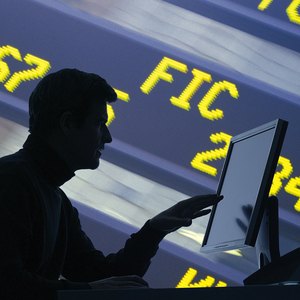
Stock symbols, or “ticker” symbols,” represent securities that are traded publicly or on a particular exchange. A stock symbol may represent a single company or any number of different security offerings issued by a company. Exchanges, such as the New York Stock Exchange (NYSE) have their own unique stock-symbol lexicons, making it possible to identify on which exchange a security is traded simply by reading the stock symbol.
History
In the United States, stock symbols often are called ticker symbols because, prior to electronic-display boards, stock symbols were reported on paper ticker tape, which made a unique ticking sound as information was printed. Wall Street, with the advent of the telegraph, began using tickers and stock symbols in the 1800s. Stock symbols were used to save transmission time and space, similar to today’s bandwidth concerns, according to the website Money-Zine. Electronic ticker displays were introduced on the NYSE in 1923 and dubbed “dynamic stock tickers,” and the two-line moving tickers -- which contain stock symbols, trading volume and price information -- are familiar to most people, whether or not they’re investors.
Exchanges
Companies trading on the NYSE contain one, two or three letters. If a company stock symbol contains one or two letters, it trades on the NYSE; no other U.S. exchange uses one- or two-letter symbols. AMEX, or the American Stock Exchange, was acquired by NYSE Euronext in 2008 and operates under the name NYSE Amex. NYSE Amex, an equities exchange that lists and trades small- and mid-cap growth, utilizes three-letter symbols. NASDAQ, the world’s first electronic stock market when it launched in 1971, is sometimes spelled “Nasdaq.” NASDAQ also operates indices and, as of the time of publication, was the world’s highest-volume exchange. It uses stock symbols of four letters.
Reading a Stock Symbol
The ubiquitousness of stock symbols on television news shows has familiarized many non-investors and novices with tickers. However, the symbols used by companies may or may not be easy to decipher. All exchanges provide online sites where visitors can search for stock symbols by entering a company’s name. Conversely, entering a stock symbol will yield the corresponding company. Some sites provide international lists of the world’s largest exchanges and all companies listed. Some companies, such as International Business Machines, have become associated almost strictly by their stock symbols -- IBM in this case. Other older and larger companies enjoy single-letter status on the NYSE, such a Kellogg -- “K” -- and Ford Motor Company, represented as “F.” Anheuser-Busch, which brews Budweiser beer and was acquired by InBev in 2008, continues to use the familiar “BUD” stock symbol. A typical ticker symbol and accompanying information viewers might see on television would be “AFG 20K @ 20.15 ^0.50.” Such a ticker symbol indicates that American Financial Group, trading on the NYSE, had a most-recent trading volume of 20,000 shares, which traded at $20.15 dollars per share, indicating an increase in price of 50 cents per share over the previous day’s closing price.
Additional Symbols
NASDAQ-traded companies sometimes employ a fifth letter or symbol to indicate additional information about a stock, such as stock’s class or preferred status. The NYSE uses a period followed by a letter or symbol to accomplish the same task -- this is called “after the dot." For example, Microsoft might use the stock symbol “MSFTA,” indicating Microsoft Class A shares. The NYSE uses the same fifth-letter or after-the-dot identification system, so “IBMP” signifies IBM First-Class Preferred Stock.
References
Writer Bio
John Kibilko has been writing professionally since 1979. He landed his first professional job with "The Dearborn Press" while still in college. He has since worked as a journalist for several Wayne County newspapers and in corporate communications. He has covered politics, health care, automotive news and police and sports beats. Kibilko earned a Bachelor of Arts in journalism from Wayne State University.

